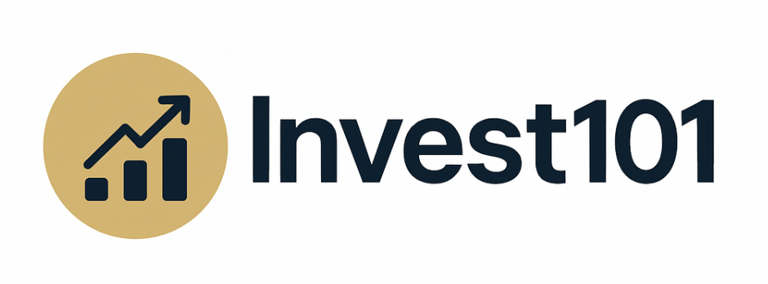The U.S. Debt Question: Should Investors Be Worried?
What rising government debt means for markets and your portfolio
MACRO & POLICY
7/7/20253 min read


The U.S. national debt has surpassed $34 trillion, and it’s rising fast. It’s a number so large it’s almost abstract, until headlines start warning of default, downgrades, and currency collapse.
So as an investor, it’s natural to ask:
“Should I be worried about U.S. debt, and what does it mean for my money?”
Let’s look past the noise and break down what the debt really is, what risks it creates, and how to invest wisely in a world where borrowing never seems to stop.
What Is the U.S. Debt, and Where Does It Come From?
The debt is the cumulative result of all past U.S. budget deficits — when government spending exceeds revenue. It includes:
Treasury bonds sold to investors (domestic and foreign)
Intragovernmental holdings (e.g. trust funds like Social Security)
Key drivers of debt growth over the last 20 years:
2001 & 2017 tax cuts (without matching spending cuts)
Military spending post-9/11
2008 financial crisis stimulus and bailouts
COVID-19 pandemic relief programs
Rising interest payments on existing debt (especially since 2022)
Is the U.S. Debt Unsustainable?
Here’s the nuance:
The debt isn’t a problem… until it becomes one.
What matters more than the absolute number is:
Debt-to-GDP ratio: The U.S. is around ~120% (historically high)
Interest as % of federal budget: Rapidly rising, projected to exceed defense spending
Confidence: Can the U.S. continue to issue debt cheaply and reliably?
So far, the answer has been yes — because:
The U.S. borrows in its own currency
It still has the world’s deepest bond market
Treasuries are seen as the ultimate safe haven
But that doesn’t mean the risks are zero.
What Are the Long-Term Risks?
If left unchecked, a rising debt burden can lead to:
1. Crowding out
As government borrowing increases, it may push up interest rates, making it more expensive for private companies and individuals to borrow.
2. Reduced fiscal flexibility
Too much existing debt limits how much future stimulus or investment the government can do — especially in recessions or emergencies.
3. Debt spiral
If interest rates stay elevated, the cost of servicing debt can grow faster than GDP — leading to more borrowing just to pay the interest.
4. Currency pressure
Persistent deficits weaken confidence in the dollar, especially if foreign buyers lose appetite for Treasuries.
5. Political gridlock & policy instability
Debt ceiling showdowns and spending debates increase uncertainty and can trigger market volatility (e.g., 2011 and 2023 episodes).
Market Signals: What Are Investors Watching?
Bond yields: If the market loses confidence, yields rise. But so far, demand remains strong.
Dollar strength: If confidence erodes, capital may flow into gold, other currencies, or real assets.
Inflation expectations: High debt can become inflationary if central banks monetize it indirectly.
Credit ratings: Downgrades (as seen with S&P in 2011 and Fitch in 2023) shake confidence, even if symbolic.
So far, markets have tolerated rising debt — but rate sensitivity is increasing. The margin for error is shrinking.
What Should Investors Do?
1. Diversify your safe assets
Don’t rely on Treasuries alone for safety. Consider:
TIPS (inflation-linked bonds)
Short-term bonds or CDs
High-quality corporate debt
2. Add real assets
If long-term debt monetization leads to inflation:
Gold, commodities, and infrastructure can act as hedges
Real estate (especially income-generating) may outperform over time
3. Be smart about equity exposure
High-debt environments favor:
Cash-generating, low-leverage companies
Value stocks over speculative growth
Sectors tied to fiscal spending (e.g., defense, energy, infrastructure)
4. Look internationally
Consider diversifying into:
Developed markets with better fiscal positions (e.g., Switzerland, Singapore)
Select emerging markets with strong demographics and low debt-to-GDP
5. Monitor debt maturity and issuance trends
Stay informed on:
Average maturity of U.S. debt (short-term rollover risk = refinancing risk)
Treasury auctions and yield curve movements
Political developments around budget and entitlement reform
Final Thought: Don’t Panic, But Don’t Ignore It
“Markets don’t punish high debt, they punish surprise.”
The U.S. debt isn’t about to cause a crisis tomorrow. But it’s creating a slow shift in how capital flows, how portfolios behave, and how governments can respond to shocks.
Smart investors stay ahead of that shift by:
Positioning for resilience, not perfection
Diversifying exposure across regions and asset types
Preparing for volatility instead of fearing it
Invest101.blog
Articles and resources for smart investing.
Contact
contact@invest101.blog
© 2025. All rights reserved.
